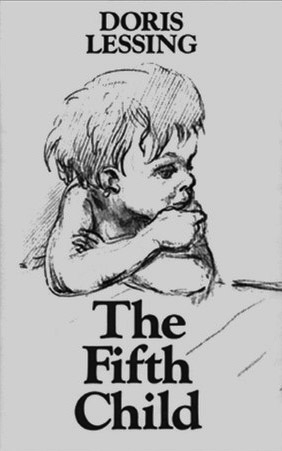
I think this is a very interesting cover image for Doris Lessing's The Fifth Child,. It is not the cover I have, but this one, mine, and many of the covers I found images of display Ben or "the fifth child" as a relatively cute toddler rather than as the monster he is always described as in the book. I'm interested in why the editor of those versions chose not to go with a more... controversial? cover, like this one:
One of the reviews on the back of The Fifth Childcalls it "a moral fable of the genre that includes Mary Shelley's Frankenstein."1 While I wouldn't necessarily go so far as to place this on the literary level of Frankenstein, I agree that it fits into the genre the earlier novel set. There are certainly very distinct similarities to Frankenstein's creation sprinkled throughout the work that makes me wonder how much Lessing took from Shelley. For instance, like Frankenstein, when Ben is born, he is described as "muscular, yellowish, long" (48). Much later, toward the end of the book, it almost seems as if Harriet is implying that Ben is some sort of descendant somehow from Shelley's creature himself. She questions: "How do we know what kinds of people--races, I mean--creatures different from us, have lived on this planet?" (106). Harriet explains that she thinks Ben is one of these nonhuman creatures, and somehow a descendent of these creatures. What I suppose was another standout connection to Shelley's novel for me was the trouble both Victor and Harriet had with admitting that they had had a part in bringing these creatures into the world, and the way they had both essentially abandoned a loving relationship with the "newborns" from the very start of their lives, even though they had been initially responsible for the birth. It seems to me a lot of blame lies with both Victor and Harriet, but that their situations also warrant an exploration of nature vs. nurture.
1 Lessing, Doris May. The Fifth Child. New York: Vintage, 1989. Print.


Great connections, Kelly -- and I hadn't seen this before class ;)
ReplyDelete